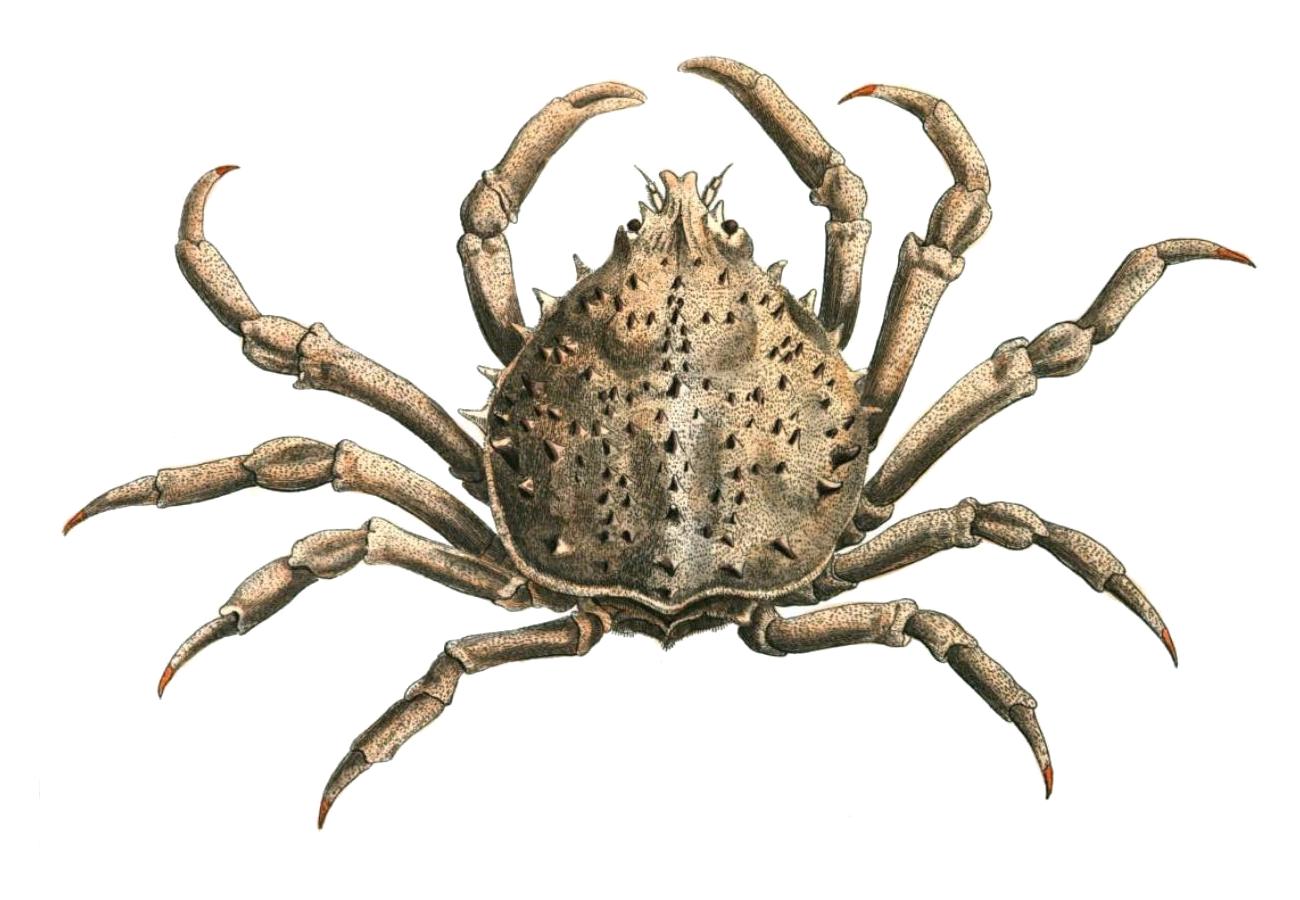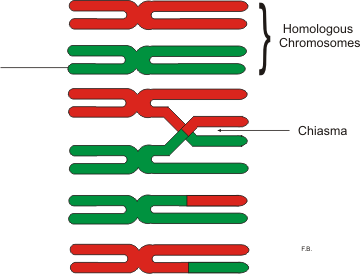|
Goniaea Australasiae
''Goniaea australasiae'' is a species of grasshopper in the family Acrididae. Experiments have been carried out with ''G. australasiae'' to study the time of genetic recombination in relation to the sequence of stages in meiosis, the relationship of Chiasma (genetics), chiasmata to Chromosomal crossover, crossing over, and the mechanism of recombination. Combined cytological and autoradiographic analyses of meiosis showed that crossing over is achieved by breakage and exchange of segments of Sister chromatids, nonsister, Homologous chromosome, homologous chromatids, and each such exchange event results in the formation of a cytologically visible chiasma. The meiotic stage at which this form of recombination takes place has been identified as "early pachytene," and it is well removed from premeiotic chromosome duplication. References Goniaea, australasiae Insects described in 1814 {{acrididae-stub ... [...More Info...] [...Related Items...] OR: [Wikipedia] [Google] [Baidu] |
William Elford Leach
William Elford Leach FRS (2 February 1791 – 25 August 1836) was an English zoologist and marine biologist. Life and work Elford Leach was born at Hoe Gate, Plymouth, the son of an attorney. At the age of twelve he began a medical apprenticeship at the Devonshire and Exeter Hospital, studying anatomy and chemistry. By this time he was already collecting marine animals from Plymouth Sound and along the Devon coast. At seventeen he began studying medicine at St Bartholomew's Hospital in London, finishing his training at the University of Edinburgh before graduating MD from the University of St Andrews (where he had never studied). From 1813 Leach concentrated on his zoological interests and was employed as an 'Assistant Librarian' (what would later be called Assistant Keeper) in the Natural History Department of the British Museum, where he had responsibility for the zoological collections. Here he threw himself into the task of reorganising and modernising these coll ... [...More Info...] [...Related Items...] OR: [Wikipedia] [Google] [Baidu] |
Grasshopper
Grasshoppers are a group of insects belonging to the suborder Caelifera. They are among what is possibly the most ancient living group of chewing herbivorous insects, dating back to the early Triassic around 250 million years ago. Grasshoppers are typically ground-dwelling insects with powerful hind legs which allow them to escape from threats by leaping vigorously. As hemimetabolous insects, they do not undergo complete metamorphosis; they hatch from an egg into a Nymph (biology), nymph or "hopper" which undergoes five moults, becoming more similar to the adult insect at each developmental stage. The grasshopper hears through the tympanal organ which can be found in the first segment of the abdomen attached to the thorax; while its sense of vision is in the compound eyes, the change in light intensity is perceived in the simple eyes (ocelli). At high population densities and under certain environmental conditions, some grasshopper species can change color and behavior and for ... [...More Info...] [...Related Items...] OR: [Wikipedia] [Google] [Baidu] |
Acrididae
The AcrididaeMacLeay WS (1821) ''Horae Entomologicae or Essays on the Annulose Animals'' 2 are the predominant family of grasshoppers, comprising some 10,000 of the 11,000 species of the entire suborder Caelifera. The Acrididae are best known because all locusts (swarming grasshoppers) are of the Acrididae. The subfamily Oedipodinae is sometimes classified as a distinct family Oedipodidae in the superfamily Acridoidea. Acrididae grasshoppers are characterized by relatively short and stout antennae, and tympanal organ, tympana on the side of the first abdominal segment. Subfamilies The ''Orthoptera Species File'' (September 2021) lists the following subfamilies of Acrididae. The numbers of genera and species are approximate and may change over time. # Acridinae MacLeay, 1821 (140 genera, 470 species), Worldwide: temperate and tropical # Calliptaminae Jacobson, 1905 (12 genera, 90 species), Africa, Europe, Asia # Caryandinae Yin & Liu, 1987 (3 genera, 100 species), Afric ... [...More Info...] [...Related Items...] OR: [Wikipedia] [Google] [Baidu] |
Genetic Recombination
Genetic recombination (also known as genetic reshuffling) is the exchange of genetic material between different organisms which leads to production of offspring with combinations of traits that differ from those found in either parent. In eukaryotes, genetic recombination during meiosis can lead to a novel set of genetic information that can be further passed on from parents to offspring. Most recombination occurs naturally and can be classified into two types: (1) ''interchromosomal'' recombination, occurring through independent assortment of alleles whose loci are on different but homologous chromosomes (random orientation of pairs of homologous chromosomes in meiosis I); & (2) ''intrachromosomal'' recombination, occurring through crossing over. During meiosis in eukaryotes, genetic recombination involves the pairing of homologous chromosomes. This may be followed by information transfer between the chromosomes. The information transfer may occur without physical exchange ... [...More Info...] [...Related Items...] OR: [Wikipedia] [Google] [Baidu] |
Meiosis
Meiosis (; , since it is a reductional division) is a special type of cell division of germ cells in sexually-reproducing organisms that produces the gametes, such as sperm or egg cells. It involves two rounds of division that ultimately result in four cells with only one copy of each chromosome ( haploid). Additionally, prior to the division, genetic material from the paternal and maternal copies of each chromosome is crossed over, creating new combinations of code on each chromosome. Later on, during fertilisation, the haploid cells produced by meiosis from a male and female will fuse to create a cell with two copies of each chromosome again, the zygote. Errors in meiosis resulting in aneuploidy (an abnormal number of chromosomes) are the leading known cause of miscarriage and the most frequent genetic cause of developmental disabilities. In meiosis, DNA replication is followed by two rounds of cell division to produce four daughter cells, each with half the number ... [...More Info...] [...Related Items...] OR: [Wikipedia] [Google] [Baidu] |
Chiasma (genetics)
In genetics, a chiasma (pl. chiasmata) is the point of contact, the physical link, between two (non-sister) chromatids belonging to homologous chromosomes. At a given chiasma, an exchange of genetic material can occur between both chromatids, what is called a chromosomal crossover, but this is much more frequent during meiosis than mitosis. In meiosis, absence of a chiasma generally results in improper chromosomal segregation and aneuploidy. Points of crossing over become visible as chiasma after the synaptonemal complex dissembles and the homologous chromosomes slightly apart from each other. The phenomenon of genetic chiasmata (''chiasmatypie'') was discovered and described in 1909 by Frans Alfons Janssens, a Professor at the University of Leuven in Belgium. When each tetrad, which is composed of two pairs of sister chromatids, begins to split, the only points of contact are at the chiasmata. The chiasmata become visible during the diplotene stage of prophase I of meiosis, b ... [...More Info...] [...Related Items...] OR: [Wikipedia] [Google] [Baidu] |
Chromosomal Crossover
Chromosomal crossover, or crossing over, is the exchange of genetic material during sexual reproduction between two homologous chromosomes' non-sister chromatids that results in recombinant chromosomes. It is one of the final phases of genetic recombination, which occurs in the ''pachytene'' stage of prophase I of meiosis during a process called synapsis. Synapsis begins before the synaptonemal complex develops and is not completed until near the end of prophase I. Crossover usually occurs when matching regions on matching chromosomes break and then reconnect to the other chromosome. Crossing over was described, in theory, by Thomas Hunt Morgan. He relied on the discovery of Frans Alfons Janssens who described the phenomenon in 1909 and had called it "chiasmatypie". The term '' chiasma'' is linked, if not identical, to chromosomal crossover. Morgan immediately saw the great importance of Janssens' cytological interpretation of chiasmata to the experimental results of ... [...More Info...] [...Related Items...] OR: [Wikipedia] [Google] [Baidu] |
Autoradiograph
An autoradiograph is an image on an X-ray film or nuclear emulsion produced by the pattern of decay emissions (e.g., beta particles or gamma rays) from a distribution of a radioactive substance. Alternatively, the autoradiograph is also available as a digital image (digital autoradiography), due to the recent development of scintillation gas detectors or rare earth phosphorimaging systems. The film or emulsion is apposed to the labeled tissue section to obtain the autoradiograph (also called an autoradiogram). The ''auto-'' prefix indicates that the radioactive substance is within the sample, as distinguished from the case of historadiography or microradiography, in which the sample is marked using an external source. Some autoradiographs can be examined microscopically for localization of silver grains (such as on the interiors or exteriors of cells or organelles) in which the process is termed micro-autoradiography. For example, micro-autoradiography was used to examine whether ... [...More Info...] [...Related Items...] OR: [Wikipedia] [Google] [Baidu] |
Sister Chromatids
A sister chromatid refers to the identical copies (chromatids) formed by the DNA replication of a chromosome, with both copies joined together by a common centromere. In other words, a sister chromatid may also be said to be 'one-half' of the duplicated chromosome. A pair of sister chromatids is called a dyad. A full set of sister chromatids is created during the synthesis ( S) phase of interphase, when all the chromosomes in a cell are replicated. The two sister chromatids are separated from each other into two different cells during mitosis or during the second division of meiosis. Compare sister chromatids to homologous chromosomes, which are the two ''different'' copies of a chromosome that diploid organisms (like humans) inherit, one from each parent. Sister chromatids are by and large identical (since they carry the same alleles, also called variants or versions, of genes) because they derive from one original chromosome. An exception is towards the end of meiosis, after c ... [...More Info...] [...Related Items...] OR: [Wikipedia] [Google] [Baidu] |
Homologous Chromosome
A couple of homologous chromosomes, or homologs, are a set of one maternal and one paternal chromosome that pair up with each other inside a cell during fertilization. Homologs have the same genes in the same loci where they provide points along each chromosome which enable a pair of chromosomes to align correctly with each other before separating during meiosis. This is the basis for Mendelian inheritance which characterizes inheritance patterns of genetic material from an organism to its offspring parent developmental cell at the given time and area. Overview Chromosomes are linear arrangements of condensed deoxyribonucleic acid (DNA) and histone proteins, which form a complex called chromatin. Homologous chromosomes are made up of chromosome pairs of approximately the same length, centromere position, and staining pattern, for genes with the same corresponding loci. One homologous chromosome is inherited from the organism's mother; the other is inherited from the organism's ... [...More Info...] [...Related Items...] OR: [Wikipedia] [Google] [Baidu] |
Goniaea
''Goniaea'' is a genus of grasshoppers in the tribe Catantopini from Australia Australia, officially the Commonwealth of Australia, is a Sovereign state, sovereign country comprising the mainland of the Australia (continent), Australian continent, the island of Tasmania, and numerous List of islands of Australia, sma .... Species *'' Goniaea angustipennis'' *'' Goniaea australasiae'' *'' Goniaea carinata'' *'' Goniaea ensicornis'' *'' Goniaea furcifera'' *'' Goniaea opomaloides'' - type species (as ''Goniaea rugulosa'' Stål) *'' Goniaea vocans'' References * {{Taxonbar, from=Q5581831 Acrididae genera Taxa named by Carl Stål ... [...More Info...] [...Related Items...] OR: [Wikipedia] [Google] [Baidu] |





